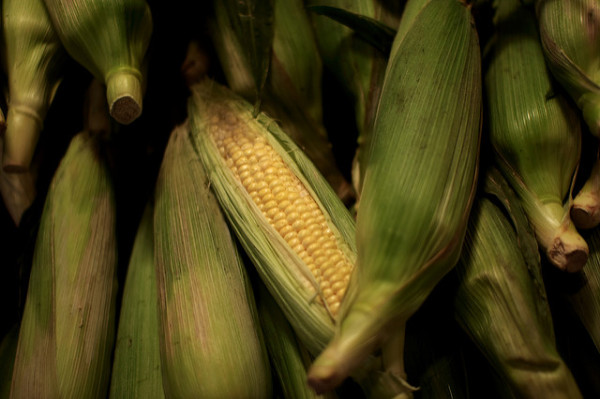Oh no, GMOs! They’re everywhere and we’re hearing from all over that they’re pure evil incarnations. But really, what exactly are GM foods and are they actually bad for us? Here are the “average Joe facts” on what GMOs are and what the big deal is.
Humanity Has a History with GMOs
GMOs are Genetically Modified Organisms and humanity actually has a very long history with GMOs. The most profound example is probably dogs; if you look at a Chihuahua or even a Basset hound, you might find it staggering to believe that they were once wolves.
The specific and deliberate selection for desired traits within a species by humans is actually a form of evolution called artificial selection. This differs from natural selection, which is evolutionary selection by a species’ environment that makes certain organisms better adapted for survival than others. In the case of artificial selection in regards to GMOs, humans have chosen traits that better suit our needs.
As we have moved into the 21st century, we unraveled some of the mysteries of the human genome. Through the Human Genome Project, we successfully sequenced the first human genome. Like the evolution of the land phone to your smart phone, the technology in the biological sciences has evolved just as rapidly, and DNA sequencing has become easier, faster, cheaper, and more precise.
What does this all have to do with mutant fish-corn?
Humanity’s practice of selective breeding has not been limited to dogs or livestock- we have also been using artificial selection on our crops for about as long as we have been on dogs. Like animals, plants have their own DNA, express hormones and proteins specified by that DNA, and are subject to their environment. Selective breeding is a long process and is not an absolute art. The goal of the molecular biologist is to expedite this process with the hope of creating a product that offers greater nutritional value and larger crop yields, and ensures that we are able to produce crops every year regardless of unexpected weather.
Feature Image Source: Studyoritim
Most commonly, you will find cisgenic GM foods in your supermarket. In this case, a desired gene or trait from one plant is inserted into another. This produces the same effect that breeding has, only we physically guarantee that the trait we want is inherited. We can also manipulate genes to modify their function. One simple example would be to mutate a suppressor gene for a protein whose product is a certain nutrient that we require. A suppressor gene is a gene that suppresses the expression of another gene. Within an organism, suppressor genes are important in conserving resources within a cell, but creating a plant that overproduces a nutrient increases its nutritional value for us. Small mutations like this are situations that we have observed happening on their own naturally; we are just guaranteeing it happens to suit the needs of our population.
The real controversy around GMOs is transgenics. These are the so-called “frankenfoods” that you always hear about that are associated with GMOs. Transgenics involves, as you have probably already concluded, taking a gene from one organism of one species and inserting it into another organism of a different species.
Transgenic foods, however, can be worrisome. We are essentially inserting a foreign gene into an organism, and rather than isolating and purifying the protein it produces, we are leaving the protein in the hopes that it will create a novel phenotype, or observable trait. The idea is that if we take a gene from a fish that helps prevent it from freezing in cold ocean temperatures and insert it into corn, the plant will then be more resilient to frost.
The big “but,” however, is that we still do not know exactly what all these genes do and how their transcribed proteins interact with each other. Corn did not evolve with fish protein, so can we really be sure that simply inserting this foreign gene will not change the chemistry of that plant entirely, maybe even developing into a carcinogenic material? The best answer is: we do not know. Is it truly a good idea to stake the future of humanity on a maybe?
The Right to Know
The political hype right now revolves around the labeling of GM foods. Some may find it surprising that many members of the scientific community actually support the labeling of GMOs. People have a right to know what foods they are putting into their bodies. A lot of people may still consume GMOs even if they are labeled. Artificially selected and cisgenic modified foods make up about 80% of our food supply right now. Labeling GM foods may or may not hurt the companies that make them but we, as the consumers, have the ability to demand information.
If you believe that GM foods should be labeled, write to your congressperson today!
Feature Image Source: Naoya Fujii










